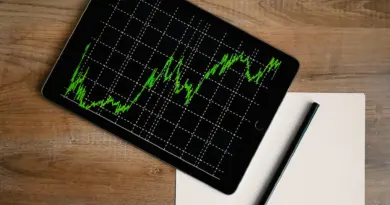How to use FX Forwards in Forex Trading
So, imagine you’re planning a party. But, there’s a catch. The party is months away. You want a special drink for the party, let’s call it “Currency Juice”. This “Currency Juice” comes from a foreign country and its price changes every day.
Here’s where FX forwards come in. They are like a promise between you and the juice seller. You both agree on a fixed price for the juice today. This fixed price won’t change, even if the market price changes in the future.
This agreement is good for you. Why? Because now you can budget for the party without worrying about price changes. So, it’s like protecting yourself from future price surprises.
This agreement is also binding. It’s a serious promise. Both you and the seller must follow it. No matter how the actual price changes, you’ll stick to your agreed price.
To calculate the fixed price, a simple formula is used. It’s based on today’s price and some extra points, related to interest rates.
So, in short, FX forwards help to manage uncertainty about future prices. They make international trade more predictable and less risky.
Use FX forwards to hedge your positions and manage your risk
As a forex trader, you can use FX forwards to hedge your positions and manage your risk.
For instance, if you think a currency pair’s exchange rate will rise in the future, you can enter a forward contract to buy the pair at a later date. In this case, you secure the rate now and profit if your prediction is correct.
On the other hand, if you expect the exchange rate to fall, you can enter a forward contract to sell the currency pair at a future date. Again, you’re locking in the rate now, protecting against a potential loss.
FX forwards can also be used to arbitrage. This means taking advantage of price discrepancies between the forward market and the spot market.
But remember, forwards are binding contracts. You’ll need to fulfill the contract even if your prediction is wrong. So, use them carefully.
Also, keep in mind that forwards are not usually traded on centralized exchanges. They are traded over-the-counter, which means you’ll need to deal directly with a financial institution or broker. Make sure you choose a reputable counterparty.
Lastly, be aware of the costs. The forward rate includes interest rate adjustments. Make sure you understand how these are calculated.
What is the difference between FX Forwards and Options?

FX forwards and options are both financial derivatives used in the foreign exchange market, but they function differently.
An FX forward contract is an agreement to buy or sell a set amount of a foreign currency at a specified price for settlement at a predetermined future date. It’s binding, meaning both parties are obligated to fulfill the contract at the agreed exchange rate and date, no matter what the market rate is at that time.
On the other hand, a currency option gives the buyer the right, but not the obligation, to buy or sell a currency at a predetermined rate on or before a certain date. If the market moves in a favorable direction, the option holder can exercise the option. If it moves against them, they can let the option expire worthless, limiting their loss to the premium they paid for the option.
Here’s a simpler way to put it: FX forwards are like a contract to buy a house in six months at a set price. No matter how the market changes, you’re obligated to buy at that price. But an option is like having a ticket that lets you buy the house at a set price. If the market price gets too high, you use your ticket. If it drops, you just don’t use the ticket and only lose the cost of the ticket itself.
In summary, FX forwards and options both offer ways to hedge against exchange rate fluctuations, but options provide more flexibility (at the cost of the premium) since they don’t obligate the holder to go through with the transaction.
7 Facts about FX Forwards
As a forex trader, here are some additional insights about FX forwards:
- Non-Delivery Forwards (NDFs): In some emerging markets, restrictions on the free flow of capital prevent direct trading in the currency. In these cases, Non-Delivery Forwards (NDFs) are used, which are settled in a widely traded currency like the USD. These are useful if you’re interested in emerging markets.
- Counterparty Risk: FX forwards are Over-The-Counter (OTC) contracts, not traded on an exchange. This means you’re exposed to counterparty risk, i.e., the risk the other party defaults. Therefore, it’s essential to trade with reputable institutions.
- Costs: The cost of an FX forward is embedded in the contract’s forward rate, calculated using the spot rate and the interest rate differential between the two currencies. Make sure you understand this calculation.
- Rolling Forwards: If you need to extend a forward contract’s settlement date, you can “roll” the contract forward. This might be useful if your anticipated currency exposure is delayed.
- Liquidity: The most liquid currency pairs for forwards are typically the same as the spot market – the major pairs like EUR/USD, USD/JPY, GBP/USD, etc. Some less traded pairs might be less liquid, which could impact pricing.
- Regulations: Depending on your jurisdiction, certain regulations may apply to FX forwards trading. It’s important to understand these and how they may impact your trading activities.
- Hedging vs. Speculating: While businesses often use forwards for hedging, as a trader, you might use them for speculation. However, speculation involves higher risk, so it’s important to have a solid risk management strategy.






